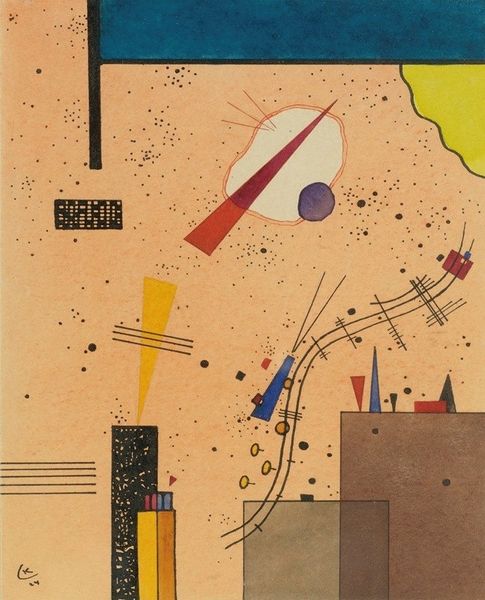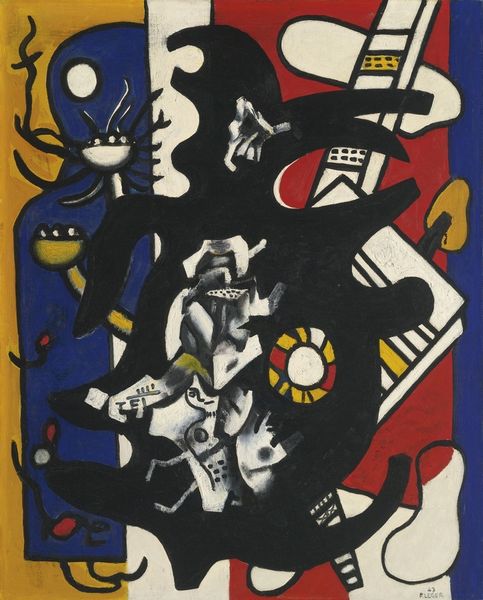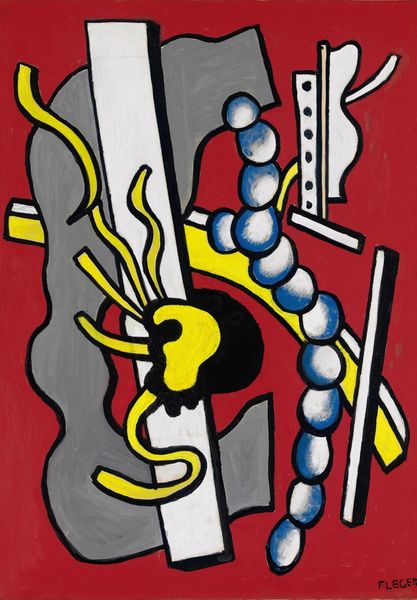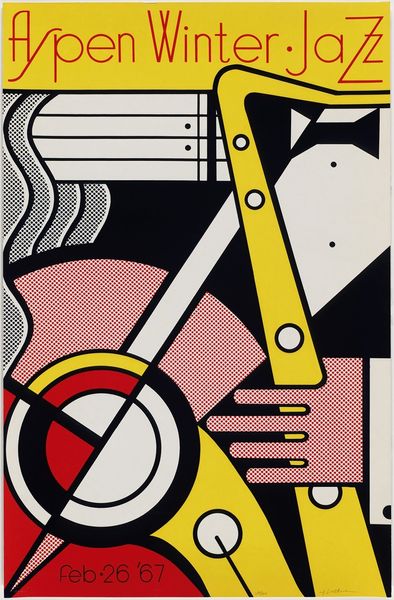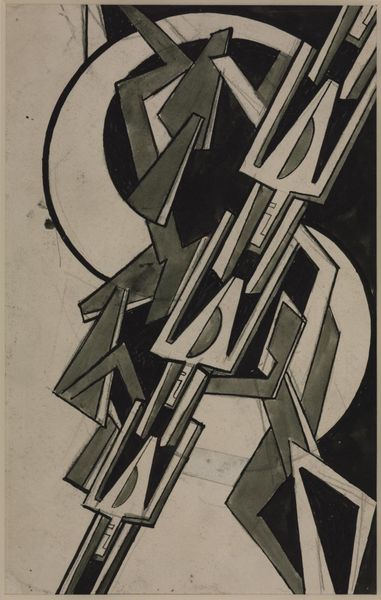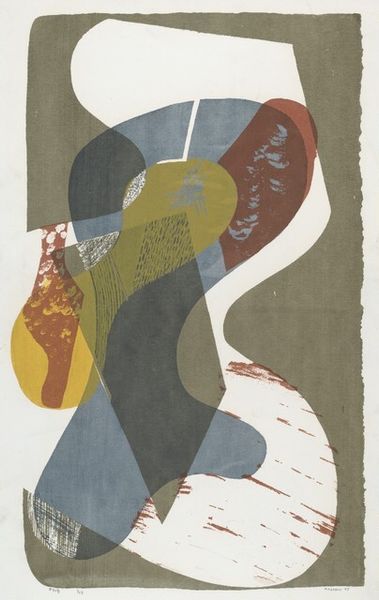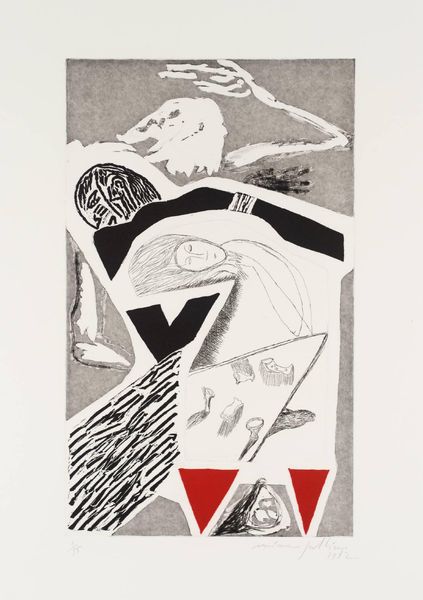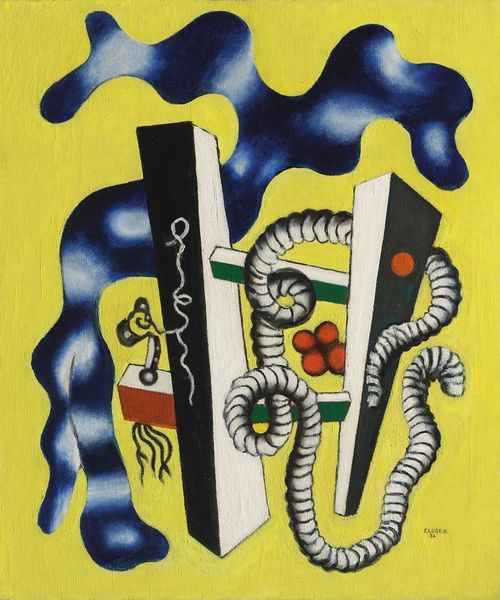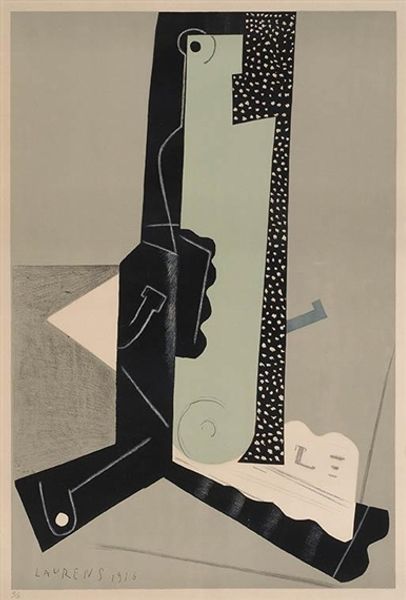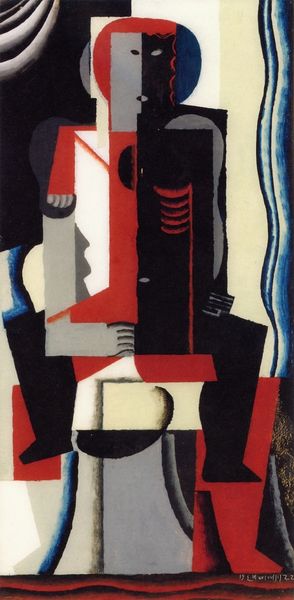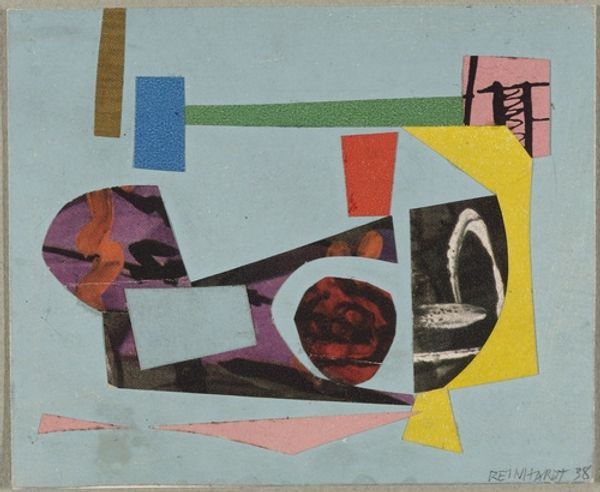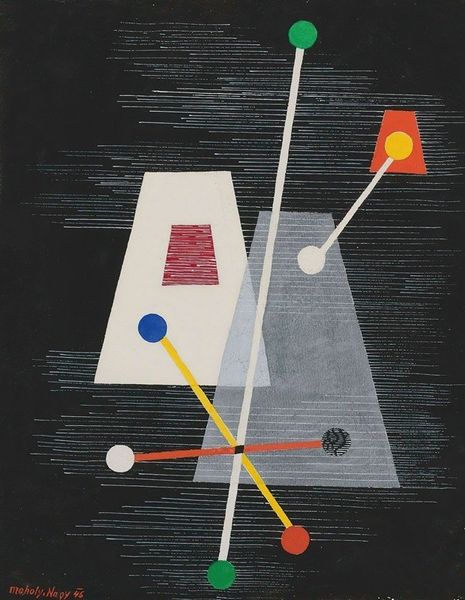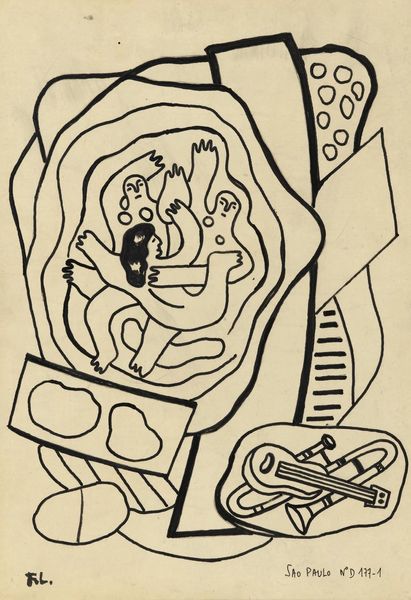
painting, oil-paint
#
cubism
#
painting
#
oil-paint
#
caricature
#
geometric
#
expressionism
#
modernism
Copyright: Modern Artists: Artvee
Curator: Well, here we have Fernand Léger's "Les deux fusils," or "The Two Rifles," painted in 1929 using oil paint. Léger, as you know, was a key figure in modern art. Editor: Oh my! It strikes me as strangely playful, even with its somewhat somber title. The rifles themselves seem almost like…cartoon figures? Is it the palette, or perhaps the unusual angles of the depicted rifles against the backdrop. Curator: Exactly! Léger aimed to integrate industrial imagery with the human form, reflecting the mechanized era. This piece reflects the tension between modern life and warfare—or, the glorification of that tension, some would argue. He presents these very potent weapons with what can only be described as cool detachment. Editor: I am so curious about Léger’s frame of mind. There’s a definite feeling that he wanted to distance himself, maybe even shield himself from the realities of violence and its aftermath. There's an unnerving calmness. Curator: Precisely. This painting, arriving just a decade after World War One, prompts consideration about how societies normalize the instruments of war. It challenges viewers to think about our relationship with such objects, their form, and what that form might obscure. I want to ask: what purposes do these objects truly serve? And who are they serving? Editor: And isn't that a haunting question? Thinking about what the formal aspects represent beyond their aesthetic charm - that bold interplay of sharp shapes and stark colors set against an equally bold yellow... But yes, the bigger issue that arises to the surface: we, as an advanced civilization, appear trapped in an endless pursuit of developing instruments to wound each other. The more abstracted the form, the more abstracted we become from that cruel reality. Curator: It's a somber thought, but the brilliance lies in that initial, almost deceptive simplicity, luring you closer to something profound. What do you take away as you reflect on our time here? Editor: I am not sure anymore. The composition of the objects evokes conflicting feelings... a fascination of the parts that comprise our technological prowess while simultaneously reminding me how little this ultimately resolves. What about you? Curator: It’s a reminder that art doesn’t exist in a vacuum. It engages with—and can often anticipate—the complexities of the world around it. This one offers more questions than answers, I think.
Comments
No comments
Be the first to comment and join the conversation on the ultimate creative platform.
